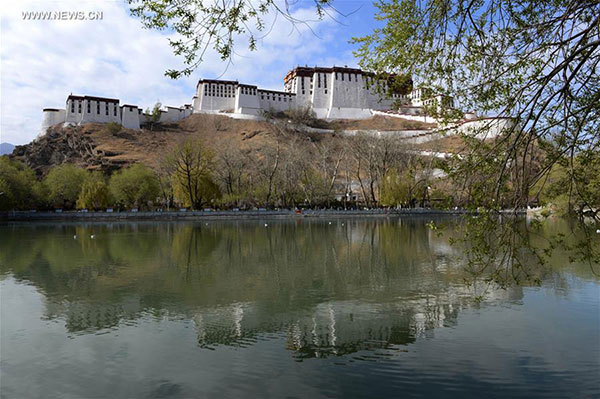 |
|
Photo taken on April 15, 2015 shows the scenery of Longwangtan Park in Lhasa, capital of southwest China's Tibet Autonomous Region. In the past 65 years, the city of Lhasa, which expanded its acreage to 100 square meters, has turned to be a mixed city, both ancient and modern. The Tibet region realized peaceful liberation on May 23, 1951. [Photo/Xinhua] |
Lhasa, capital of Southwest China's Tibet autonomous pegion, has passed a law to protect its ancient villages, authorities said Wednesday.
The law, effective June 1, stipulates principles on ancient village protection and restoration, funds, responsibilities and building a long-term protection mechanism. It also demands a "supervisor mechanism" and encourages volunteer groups to help with protection efforts, according to the regional government.
Lhasa has 1,123 villages, which boast unique landscapes, cultures and traditions. As the local economy speeds up, many ancient villages have yet to be restored, and the law was enacted to address this, the government said.
"The law will enhance protection efforts for precious cultural resources in Lhasa," said Zhang Hui, vice director of the standing committee of the Lhasa municipal people's congress.